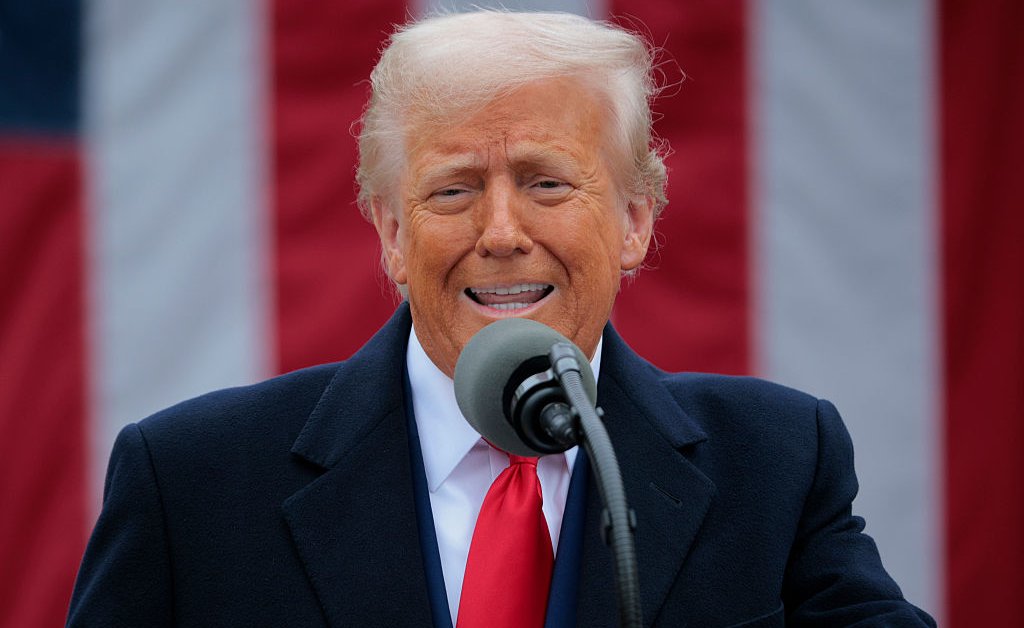Global Trade Reshaped: Trump's Tariff Announcements – A Seismic Shift in International Commerce
Editor’s Note: This article analyzes the lasting impact of President Trump's tariff announcements on global trade, exploring both immediate consequences and long-term ramifications.
1. Introduction:
President Trump's sweeping tariff announcements, beginning in 2018, sent shockwaves through the global economy. These actions, targeting various sectors and countries, fundamentally reshaped international trade dynamics. This article delves into the key impacts of these tariffs, examining their effects on different industries, international relations, and the overall global economic landscape. We’ll explore the short-term disruptions and analyze the long-term consequences that continue to ripple through the world's markets today.
2. Why This Topic Matters:
Understanding the consequences of Trump's tariffs is crucial for several reasons. First, these policies had a direct impact on consumer prices, impacting household budgets worldwide. Second, the trade wars sparked by these tariffs significantly affected global supply chains, forcing businesses to adapt or face substantial losses. Third, the geopolitical ramifications were significant, straining relationships between major economic powers and leading to retaliatory measures that further complicated the global trade environment. This article aims to provide a comprehensive overview of these multifaceted consequences.
3. Key Takeaways:
| Impact Area | Key Takeaway |
|---|---|
| Consumer Prices | Tariffs led to increased prices for many imported goods. |
| Global Supply Chains | Supply chains were disrupted, leading to delays and increased production costs. |
| Geopolitical Relations | Trade tensions escalated, straining relationships between major economic powers. |
| Domestic Industries | Some domestic industries benefited from protectionist measures, while others suffered. |
| Global Growth | Global economic growth was negatively impacted by reduced trade and investment. |
4. Main Content
Subheading 1: Trump's Tariff Announcements: A Deep Dive
Introduction: The core of the trade disputes initiated by President Trump stemmed from his administration's belief that unfair trade practices by other nations harmed American industries. The tariffs were presented as a means of leveling the playing field and protecting American jobs.
Key Aspects: Trump's tariff strategy focused on several key areas: steel and aluminum imports (with broad exemptions), goods from China (escalating in stages), and retaliatory tariffs against various countries imposing tariffs on US goods.
Detailed Analysis: The tariffs on steel and aluminum, while initially aimed at national security concerns, sparked immediate retaliatory measures from the EU, Canada, and Mexico. The escalating trade war with China involved billions of dollars in tariffs on various goods, leading to significant economic disruption. This section will detail specific examples and analyze the economic data supporting these claims.
Subheading 2: Interactive Elements on Global Trade Reshaping
Introduction: The impact of Trump's tariffs wasn't merely a static shift; it created a dynamic environment where businesses and governments continually reacted and adjusted their strategies.
Facets: Key elements included: the scramble to diversify supply chains, the rise of regional trade agreements as alternatives to multilateral ones, and the increased focus on domestic manufacturing. Challenges included increased costs, uncertainty, and the difficulty in predicting future trade policy.
Summary: The interactive nature of this period emphasized the interconnectedness of the global economy and highlighted the vulnerability of businesses reliant on specific international trade routes.
Subheading 3: Advanced Insights on the Lingering Effects
Introduction: While the Trump administration is no longer in power, the ramifications of its trade policies continue to be felt. A deeper examination reveals the lasting impacts on both economic structures and geopolitical relationships.
Further Analysis: This section will include expert opinions from economists and trade specialists, analyzing the long-term effects on specific industries and the overall global economic outlook. We'll discuss the ongoing effects on inflation and the reshaping of global supply chains.
Closing: Understanding the long-term implications is crucial for businesses and policymakers alike. This enduring impact demands continued analysis and proactive strategies for navigating the altered global trade landscape.
5. People Also Ask (NLP-Friendly Answers)
Q1: What is the impact of Trump's tariffs on consumers? A: Trump's tariffs generally led to higher prices for imported goods, impacting consumer spending power.
Q2: Why were these tariffs implemented? A: The Trump administration argued these tariffs were necessary to protect American jobs and counter unfair trade practices.
Q3: How did other countries respond to the tariffs? A: Many countries retaliated with their own tariffs, escalating trade tensions and disrupting global trade flows.
Q4: What are the long-term effects of these tariffs? A: Long-term effects include reshaped global supply chains, increased geopolitical tensions, and shifts in international trade agreements.
Q5: How can businesses adapt to this new trade environment? A: Businesses need to diversify their supply chains, explore new markets, and engage in effective risk management strategies.
6. Practical Tips for Navigating the Post-Tariff World
Introduction: Businesses operating in a globalized market need to adapt to the changed trade environment.
Tips:
- Diversify your supply chains.
- Invest in risk management strategies.
- Monitor trade policy changes closely.
- Explore new market opportunities.
- Improve domestic production efficiency.
- Build stronger relationships with international partners.
- Consider trade agreements and their implications.
- Implement robust data analysis for forecasting and decision-making.
Summary: Proactive adaptation and strategic planning are essential for navigating the ongoing consequences of Trump's tariff announcements.
7. Summary:
President Trump's tariff announcements dramatically altered the global trade landscape. While intended to protect American industries, they resulted in higher consumer prices, disrupted supply chains, and strained international relations. The long-term consequences continue to unfold, requiring businesses and policymakers to adapt to a fundamentally changed global economic environment.
8. Call to Action (CTA):
Ready to navigate the complexities of global trade in this new era? Subscribe to our newsletter for in-depth analysis and expert insights on international commerce.

